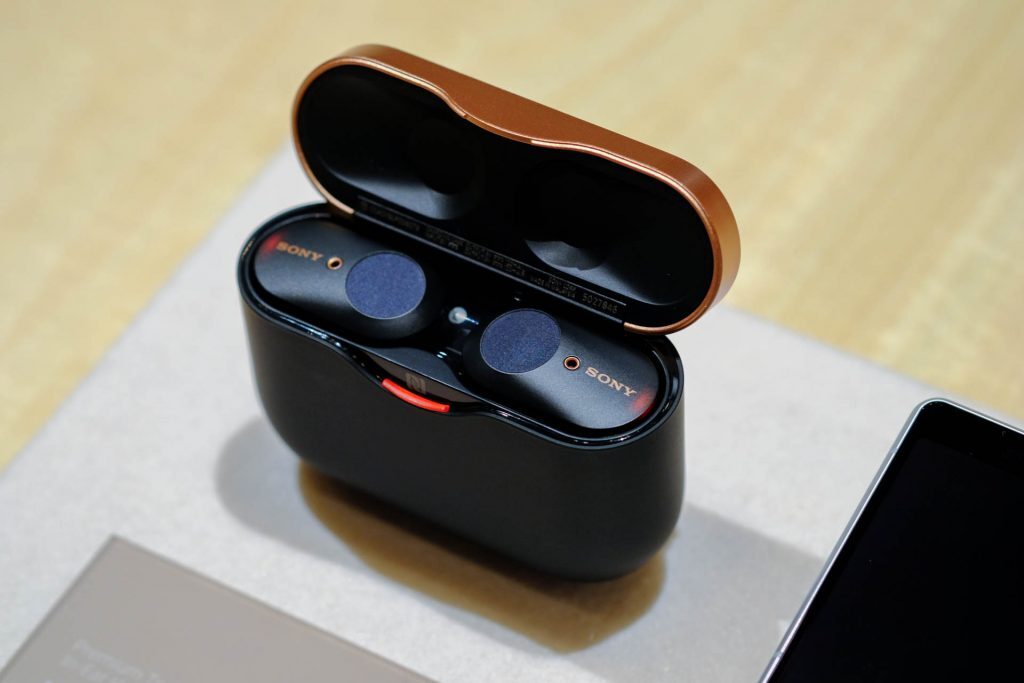Three years ago, truly wireless earphones were little more than a line item on tech-heads’ wish lists, outranked only, perhaps, by hoverboards and flying cars. Today the market is awash with options, and most headphone makers are onto second or third iterations. Like some of its rivals’ efforts, Sony’s first attempt at wireless buds had problems. With its second, the awkwardly named WF-1000XM3, Sony’s looking to address the criticisms, and leading the field with one feature in particular: active noise-cancelling.
Make some noise
Sony’s recent over-ear noise-cancellers, the WH-1000XM3 (that’s H, not F, presumably for ‘headband’… though we’re not sure what the F stands for when it comes to the in-ear series) were our headphones of the year in last year’s Stuff Awards. The combination of comfort, design, sound quality, fit, impressive battery life and outstanding noise cancelling simply couldn’t be topped at the price point. With the in-ear version, Sony’s hoping to bring the same features to the smaller form factor… and no doubt hopes to see the WFs achieving similarly enthusiastic — and near universal — acclaim.

Moreover, though the selection of sample tracks on offer was slim, the soundstage was wide and the balance of lows, mids and highs was outstanding… especially for in-ears. And that’s part of the point, right? To succeed, Sony’s earbuds can’t just be the first with noise-cancelling abilities, they need to do that well while also sounding great. We did experience some drop outs, but that may’ve been due to the abundance of devices in attendance. We’ll reserve judgment on the quality of connectivity until we’ve tested them properly.
24-Hour party people
With NC turned on Sony reckons users can look forward to six hours between visits to the charging case. That climbs to eight without NC, and as there are seven different pairs of tips in the box, many users may use the NC less than they expect. The case, meanwhile, is good for three full top-ups, bringing the total battery life to an estimated 24 hours with NC, or 32 without. Need a quick top up? Stick the buds in the case for 10 minutes and you can expect 90 minutes of playback.
All of this juice comes at a price — the WF case is more than double the size of an AirPods or Galaxy Buds case. For some users that might be a problem, but for others, being able to save the space an over-ear headphone case demands in their carry-on luggage might make it a proverbial no-brainer. We also like that the case has a status LED, as do both earbuds, and that the earbuds are held in place in the case with magnets (see more on that in the video below). We’ve had problems with other wireless earphones where they misalign in the case and fail to charge, which is hugely frustrating, so we’re glad Sony’s put paid to that.
Looking at the specifications, there are three obvious problems with Sony’s new earbuds. First off, there’s no IP rating. In other words, they’re not designed to withstand — nor are they guaranteed against — any moisture… which seems a very peculiar omission for a product so well suited to soundtracking sweaty runs or gym sessions, and for something so likely to occasionally find the wearer caught in the rain (we definitely wouldn’t want to spill any piña coladas on them, either).
Second, there are no volume controls on the buds themselves — by default, the left bud’s touchpad controls ambient sound setting (but can be changed to Google Assistant) while the right is for playback controls. The functions of the left and right buds can be reversed, but neither can be set to adjust volume. Conceivably Sony could change that with a firmware update, but we’re not going to hold our breath. Also, as the earbuds aren’t officially designed for exercise, it may not matter that much — in most other instances our connected device tends to be easy enough to get to. That said, gripe 2.2 is that the buds can only connect to one device at a time. That’s suboptimal, but switching between devices simply requires a quick visit to the Bluetooth menu.
The third feature conspicuous in its absence is the case’s lack of wireless charging support. Sony’s representatives say this was a deliberate decision because of the variable speeds of wireless chargers, and the fact that the battery life is so good most people won’t need to charge the case very often anyway. Hmm.
Were we the betting sort, we’d wager at least two of these three issues will be addressed with the XM4s. For now though, we’re off to test the current generation. It’s too early to tell whether or not Sony’s NC in-ears are going to sell as voraciously as its over ears, but one thing is certain: The inventor of the Walkman — an iconic audio device that changed personal, portable audio forever, and which celebrates its 40th anniversary this year — used to be the king of audio, and it wants the throne back.